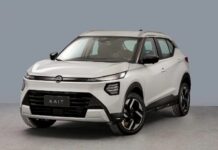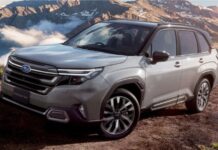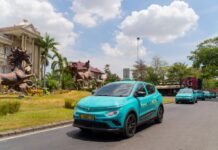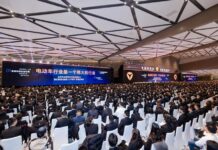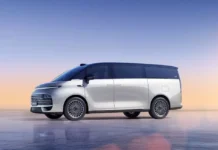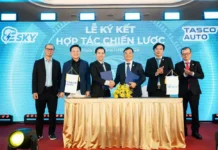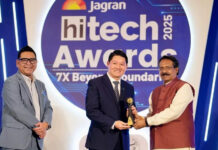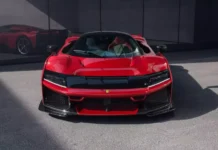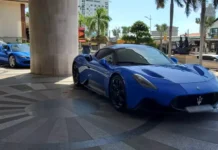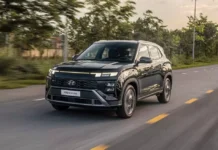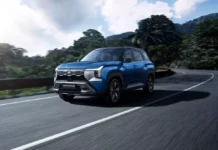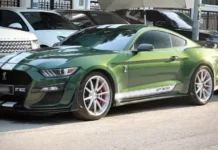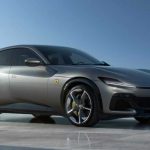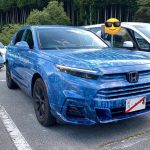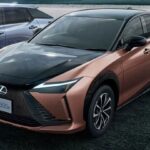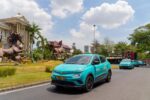On September 13th, Honda hosted a press conference to announce its strategy for achieving carbon neutrality in its global motorcycle business, with a strong focus on electrification. As the world’s largest motorcycle manufacturer, Honda is committed to leading the way in the “carbon-neutral era” by delivering the exhilaration of riding through electric motorcycles and integrating advanced software technology into its electric models.
Carbon Neutrality Targets for Motorcycle Products
Honda aims to achieve carbon neutrality for all of its motorcycle products by the 2040s, making it the top environmental priority in its motorcycle business.
In order to meet the diverse needs and purposes of customers around the world, Honda has been and will continue to offer a wide range of models, from small displacement motorcycles to large displacement motorcycles, particularly in emerging and developing countries. However, the popularization of electric motorcycles in these countries faces challenges such as the weight and cost of the vehicles. Additionally, demand for electric motorcycles is heavily dependent on government incentives, regulations, and the availability of charging infrastructure in each market.
Based on the current landscape, Honda will accelerate the electrification process of its motorcycles while continuously improving internal combustion engines (ICE) to achieve its carbon neutrality goal.
To achieve its carbon neutrality target, Honda will implement initiatives to reduce CO2 emissions from its ICE motorcycles and develop models that can be powered by environmentally friendly fuels like bioethanol. In addition to Brazil, where motorcycles using mixed fuel (E100) are already available, Honda plans to introduce motorcycles running on mixed fuel in India. Starting in 2023, Honda will launch motorcycles using a blend of fuel (E20) for the first time, followed by motorcycles running on mixed fuel (E100) in 2025.
Electric Mobility Initiatives
Honda will introduce a wide range of electric motorcycles, ranging from entry-level models to large-scale models. By 2025, Honda aims to introduce over 10 new electric motorcycle models, with a target of selling 1 million units annually within the next five years and 3.5 million units (approximately 15% of total sales) by 2030.
Entry-level Electric Motorcycles
Under its Honda e series, Honda offers business motorcycles and aims to promote these electric motorcycles globally. Additionally, Honda supplies Honda e Business motorcycles to Japan Post and Vietnam Post for delivery purposes. Currently, Honda is conducting a pilot project with Thailand Post and plans to commence production and sales of the Benly e motorcycles in Thailand in September.
Honda e Business motorcycles are equipped with replaceable and rechargeable batteries known as Honda Mobile Power Packs (MPP), making them suitable for small cargo distribution and addressing range and charging time concerns.
For personal motorcycles, Honda plans to introduce two electric motorcycle models between 2024 and 2025 in Asia, Europe, and Japan. Furthermore, Honda is testing various personal motorcycle models, including direct charging and swappable battery options.
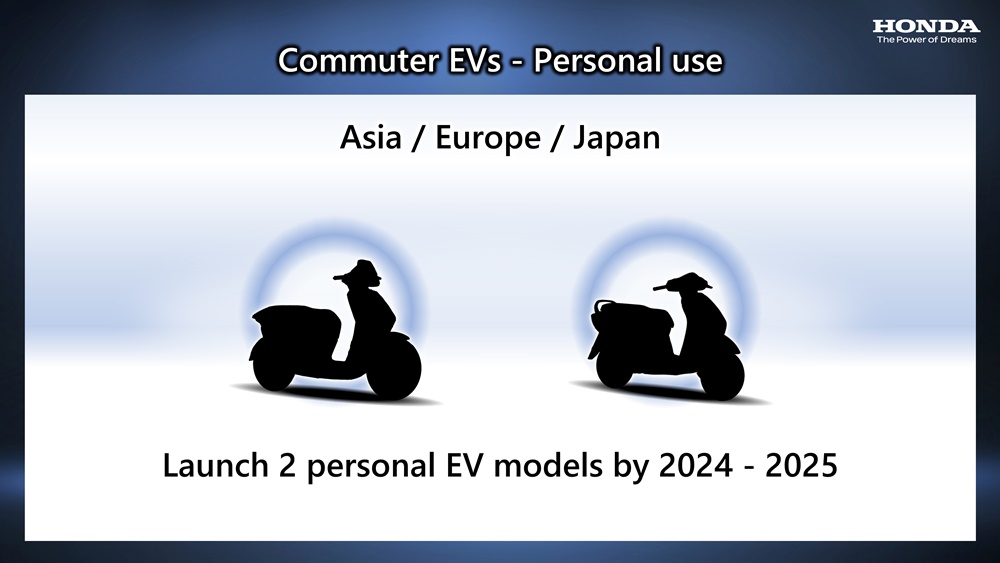
Simulation of Honda’s two personal electric motorcycle models.
Electric Scooters/Mopeds (EM) / Electric Bicycles (EB)
Electric scooters and electric bicycles account for over 90% of global electric motorcycle sales in the industry (around 50 million units). Recognizing the growing global demand for electric scooters and electric bicycles, Honda plans to introduce a total of five compact electric scooter and electric bicycle models at affordable prices in Asia, Europe, Japan, and even China by 2024.
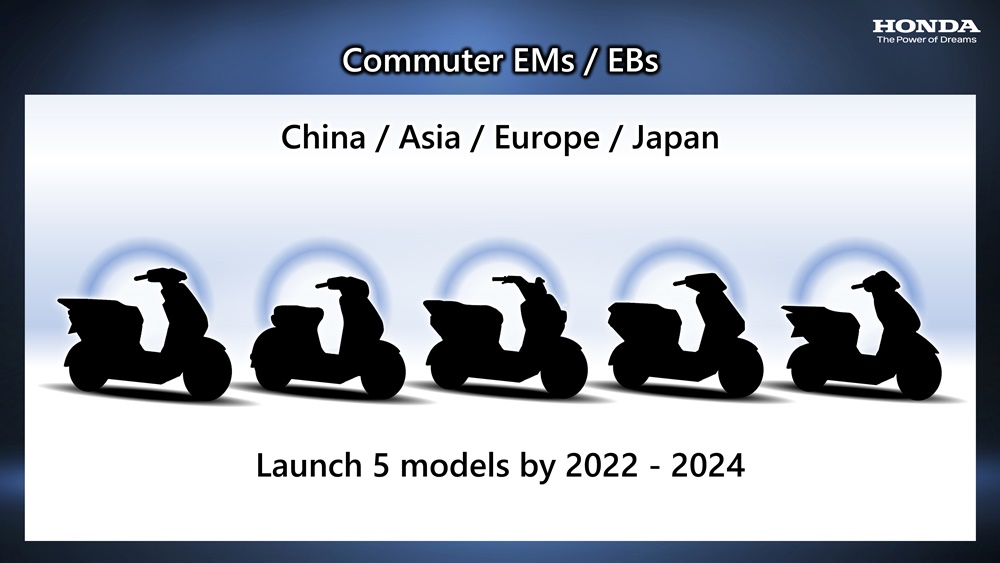
Simulation of Honda’s electric scooter/moped (EM) and electric bicycle (EB) models.
Large-scale Electric Motorcycles
In addition to popular electric motorcycles, Honda is actively developing electric motorcycles in the “FUN” (large-scale) category. Building upon its existing large-scale electric motorcycle platform (FUN EV), Honda plans to introduce three large-scale electric motorcycle models in Japan, the United States, and Europe between 2024 and 2025. Furthermore, Honda will unveil the Kids Fun EV model, designed specifically to bring the joy of riding to younger generations.
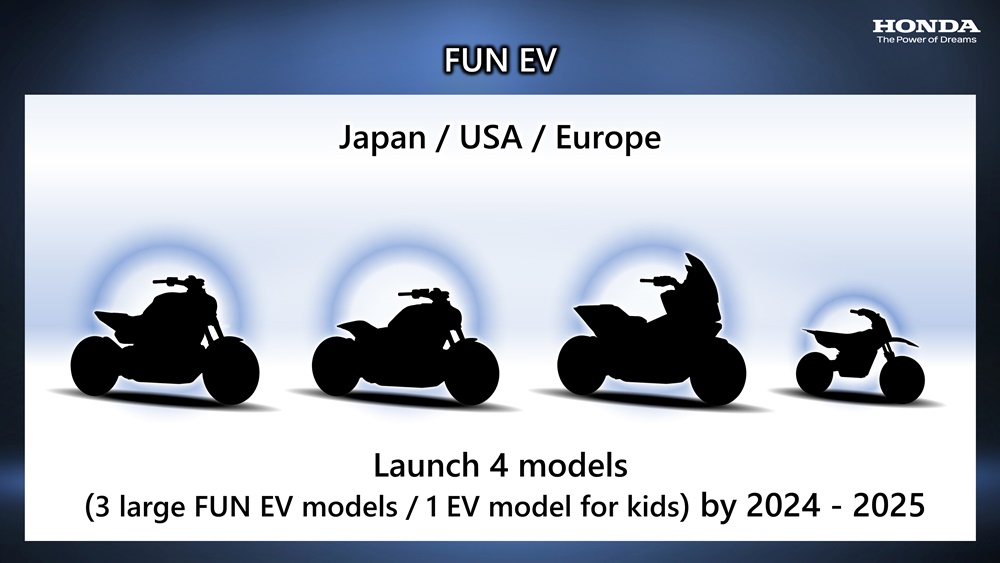
Simulation of Honda’s large-scale electric motorcycle.
Honda will develop and implement a new platform for its electric motorcycles, incorporating three core components – batteries, power control units (PCUs), and motors – into the motorcycle frame. This will provide customers with an enjoyable riding experience on reasonably priced electric motorcycles. Honda aims to equip its electric motorcycles with lithium batteries that have been researched and developed in-house.
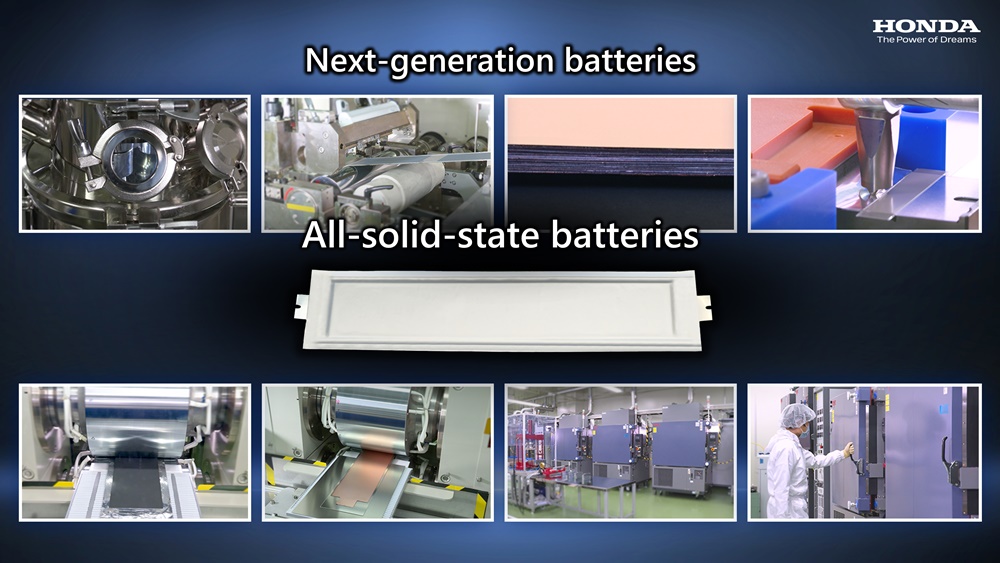
Honda aims to equip its electric motorcycles with lithium batteries developed in-house.
Making Electric Mobility More Comfortable and Intelligent
Battery Sharing Promotion
Enhancing the charging infrastructure and establishing standardized battery specifications are crucial for increasing the popularity of electric motorcycles. Honda is actively working on promoting battery swapping systems as part of its efforts to enhance the charging infrastructure.
Honda has established a joint venture company in Indonesia to operate battery swapping services using Mobile Power Packs (MPP) and motorcycles with removable batteries. The joint venture is currently providing battery sharing services in Bali. Additionally, Honda plans to commence battery swapping services for three-wheeler electric taxis in India by the end of this year. Honda also has plans to expand its battery swapping initiatives to other Asian countries.
Battery Standardization
In Japan, the four major Japanese motorcycle manufacturers have agreed on common technical specifications for swappable chargeable batteries based on JASO guidelines. Honda is actively involved in a battery consortium in Europe and is collaborating with a partner company in India to work towards standardized battery swapping.
Advancements in Software Technology
In order to enhance the value proposition of its electric motorcycles, Honda aims to evolve its business operations from a primarily hardware-focused approach to a recurring revenue model that combines hardware and software. Starting with the entry-level electric motorcycle scheduled for release in 2024, Honda will provide user experience (UX) features, continuously enhancing the riding experience through connected software capabilities. These features include optimized route options, charging point notifications, safe driving training support, and after-sales services.
In the future, Honda aims to establish a large-scale connectivity platform that not only interconnects its motorcycles but also integrates various Honda products, creating a seamless connectivity experience beyond core product areas.
Honda Vietnam’s Strategy in Alignment with Honda’s Global Strategy
Honda Vietnam (HVN) is committed to creating a sustainable “moving” society in Vietnam. To achieve this vision, HVN is conducting research on customer needs to develop products and establish future electric vehicle infrastructure in the Vietnamese market.
One of Honda’s initiatives is its collaboration with Vietnam Post Corporation to implement the Electric Vehicle Rental project, utilizing Honda Benly e motorcycles. This project has provided valuable user evaluation data, serving as a foundation for assessing the feasibility of electric vehicles in the future.
In 2021, HVN and the Vietnam Association of Motorcycle Manufacturers (VAMM) collaborated with the University of Transport and Communications to develop battery exchange standards. These initiatives are part of HVN’s efforts to work with the government in establishing battery standards that are harmonized and compatible with international standards.
Through these activities, Honda Vietnam aims to establish a comprehensive roadmap for environmentally friendly initiatives and contribute to the popularization of electric vehicles in the future. Moreover, HVN seeks to collaborate closely with the government, relevant ministries, and business partners in order to build and develop appropriate infrastructure for electric mobility.

